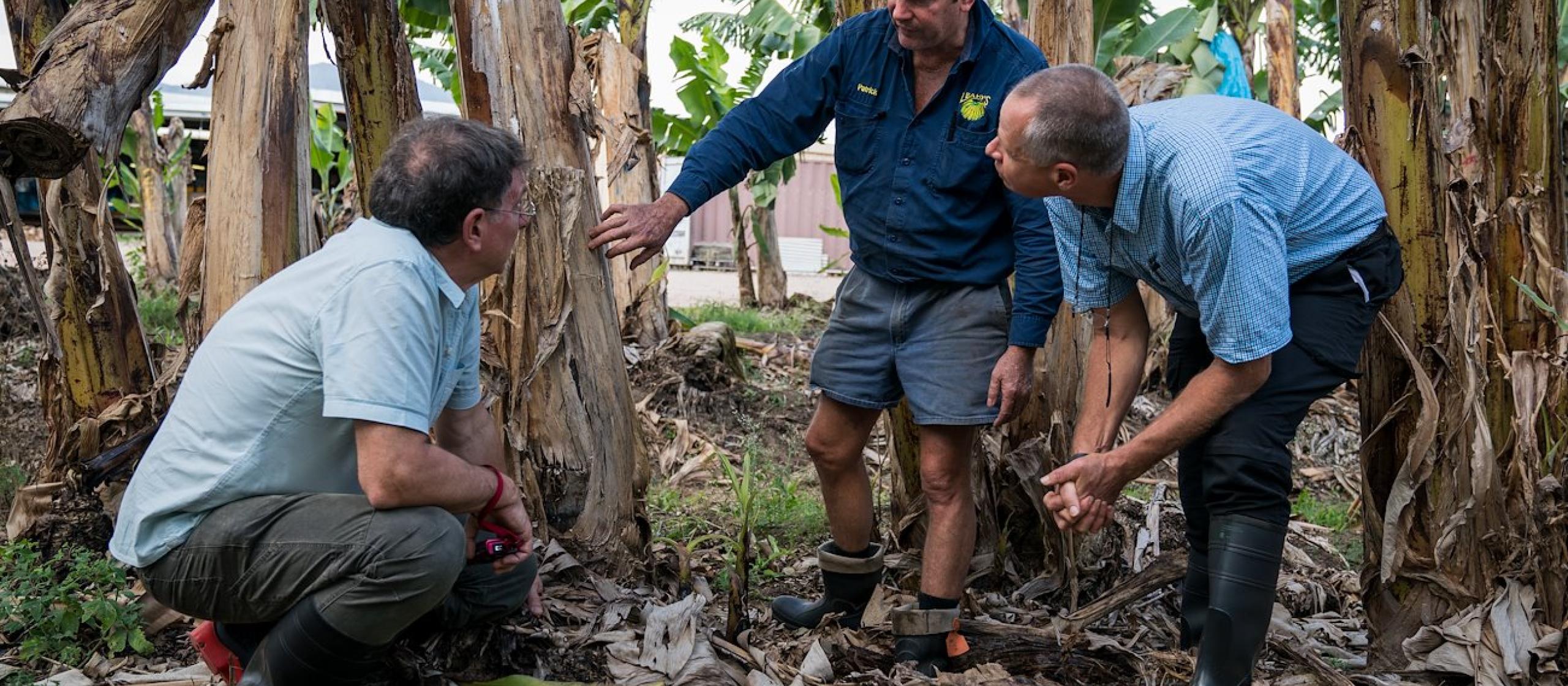- HomeHome
-
About ACIAR
- Our work
- Our people
-
Corporate information
- ACIAR Audit Committee
- Commission for International Agricultural Research
- Policy Advisory Council
- Agency reviews
- Executive remuneration disclosure
- Freedom of information (FOI)
- Gifts and benefits register
- Information publication scheme
- List of new agency files
- Contracts
- Legal services expenditure
- Privacy impact assessment register
- Commonwealth Child Safe Framework
- Benefits to Australia
- Careers
- 40 years of ACIAR
-
What we do
- Programs
- Cross-cutting areas
- Resources
- Where we work
-
Funding
- Research projects
- Fellowships
-
Scholarships
- John Allwright FellowshipScholarships to study in Australia for ACIAR partner country scientists to have Australian postgraduate qualifications
- ACIAR Pacific Agriculture Scholarships and Support and Climate Resilience Program
- Alumni Research Support Facility
- Publications
- News and Outreach
Date released
20 December 2017
Scientists from the Centre for Agriculture and Bioscience International (CABI) have cautioned a ‘perfect-storm’ of disease could decimate the world’s $35 billion global banana industry.
The warning comes as three pests spread throughout the Asia-Pacific, across the Middle-East and into Eastern Africa.
The diseases—Panama disease tropical race 4 (TR4), Banana Bunchy Top Virus (BBTV) and Banana Skipper Butterfly—have the potential to destroy banana crops, which are vital to the diet of more than 400 million people in developing countries.
Scientists fear that unless a worldwide framework of prevention, detection and management is implemented, this lethal cocktail of fungal, viral and insect risks could combine making containment of the attacks more complicated and less successful.
‘It is vital that scientists, industry, governments and international organisations come together and agree on a unified prevention, detection and management framework which is able to respond to any invasive species–not just specific ones,’ says Dr Roger Day, Sanitary and Phytosanitary (SPS) Coordinator at CABI.
‘It is only by working together swiftly across borders and across sectors that these threats to global biosecurity and, ultimately, the world’s food security can be mitigated’, he says.
Preventing the spread of disease
For almost a decade, the Australian Centre for International Agricultural Research (ACIAR) has been funding projects aimed at preventing the spread of Panama disease on smallholder farms in Indonesia and the Philippines.
The experienced gained from these projects meant that when TR4 was first detected in Australia in March 2015 at a banana plantation in Queensland, researchers were already armed with the knowledge on how to respond.
Lessons from Indonesia and the Philippines led to the implementation of the farm zone system and a series of educational workshops to help Australian farmers prevent spreading the disease. The projects also gave Australian researchers the opportunity to develop integrated management systems using a combination of partially resistant cultivars in a disease suppressive soil management regime.
‘The experience we gained [on the ACIAR project] in the Philippines proved timely for Queensland and the value of that experience has been acknowledged by everyone in the banana industry and the Queensland Government,’ says Dr Tony Pattison from the Queensland Department of Agriculture and Fisheries (QDAF).
Dr Pattison has first-hand experience of TR4. In the late 2000s, he worked on an ACIAR project in Indonesia that surveyed the prevalence of TR4. At the time the fungus was widespread and found wherever people were growing bananas.
‘Indonesia grows a wide variety of banana types,’ Dr Pattison explains. ‘Besides Cavendish bananas, many of the local dessert varieties (that are eaten fresh) proved susceptible, while plantain (or cooking) varieties proved more resistant.’
For the smallholder farmers, this meant the banana varieties that make the most money were the most susceptible to TR4.
Panama in the Philippines
As TR4 continued to spread and wreak havoc across South-East Asia, the Philippines Government called on ACIAR and the experience gained in Indonesia to develop a project to help defend smallholder banana producers from devastation by TR4. Stewart Lindsay, Team Leader of Banana Production Systems at the Queensland Department of Agriculture and Fisheries, is leading the project—Integrated management of Fusarium wilt of bananas in the Philippines and Australia.
'Panama disease incursion is a great example of why we need to continue to invest in agricultural research and development,' says Lindsey. 'This is not a problem that an individual or a company or a country for that matter, will find the solution to.'
The Australian industry has certainly benefited a lot from the ACIAR project and the collective works on Panama.
'This ACIAR project invests around just short of a million dollars over four years,' says Lindsay. 'But compare that to the value of the Australian banana industry at $600 million every year, and the 10,000 direct employees that are involved in that. This is about getting solutions to people whose livelihoods potentially are disappearing'.
As well as stopping TR4 spreading through soil movement, the project hopes to understand mechanisms that suppress the symptoms, and identify how to effectively dispose of infected plant residue. It also aims to profile knowledge of banana growers and the barriers to adopting relevant practices throughout the industry.
As part of this effort, Biosecurity Queensland has launched a Panama Disease webpage and awareness campaign encouraging locals to ‘help shut the gate on Panama disease’.




